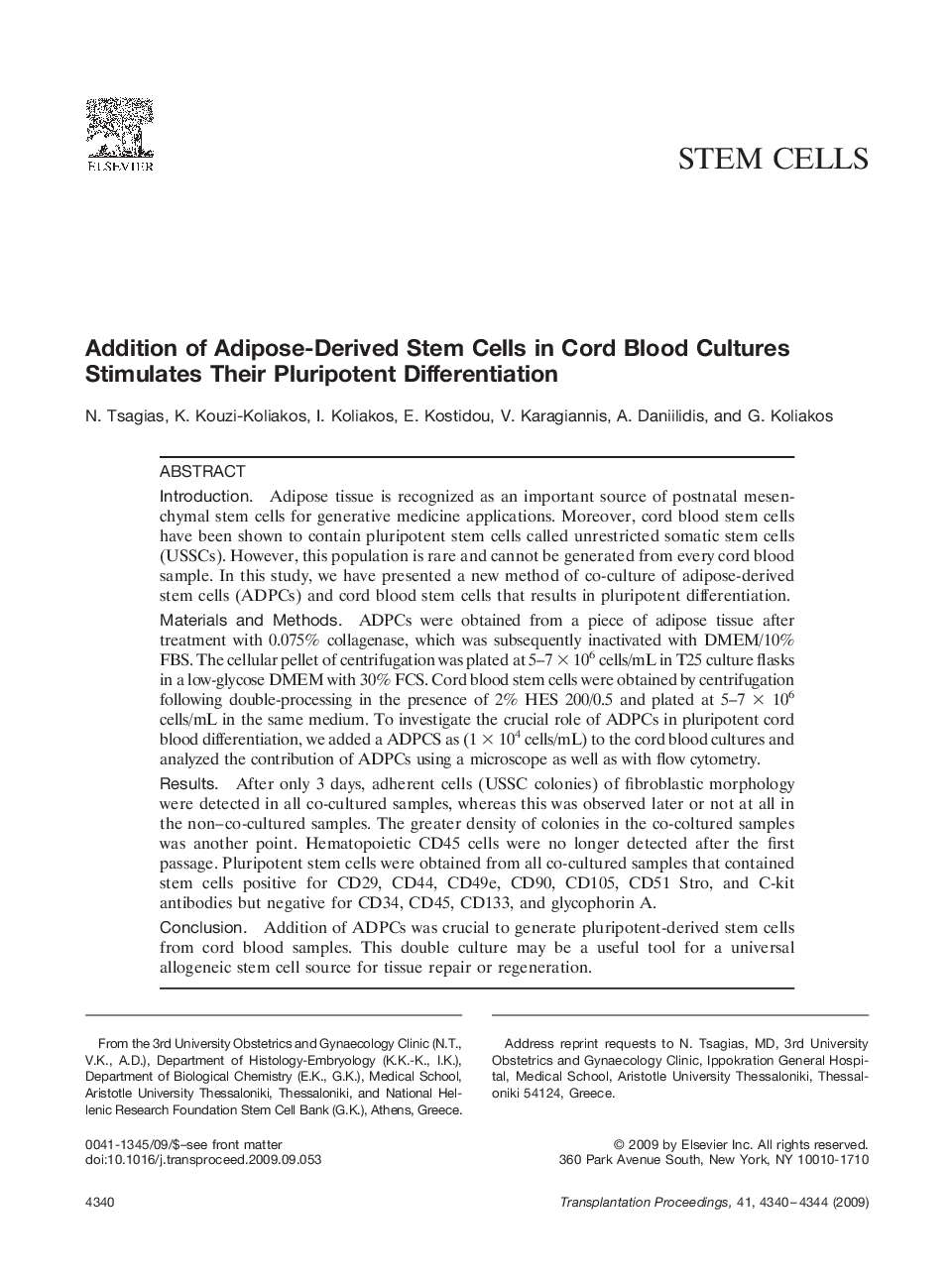| Article ID | Journal | Published Year | Pages | File Type |
|---|---|---|---|---|
| 4258515 | Transplantation Proceedings | 2009 | 5 Pages |
IntroductionAdipose tissue is recognized as an important source of postnatal mesenchymal stem cells for generative medicine applications. Moreover, cord blood stem cells have been shown to contain pluripotent stem cells called unrestricted somatic stem cells (USSCs). However, this population is rare and cannot be generated from every cord blood sample. In this study, we have presented a new method of co-culture of adipose-derived stem cells (ADPCs) and cord blood stem cells that results in pluripotent differentiation.Materials and MethodsADPCs were obtained from a piece of adipose tissue after treatment with 0.075% collagenase, which was subsequently inactivated with DMEM/10% FBS. The cellular pellet of centrifugation was plated at 5–7 × 106 cells/mL in T25 culture flasks in a low-glycose DMEM with 30% FCS. Cord blood stem cells were obtained by centrifugation following double-processing in the presence of 2% HES 200/0.5 and plated at 5–7 × 106 cells/mL in the same medium. To investigate the crucial role of ADPCs in pluripotent cord blood differentiation, we added a ADPCS as (1 × 104 cells/mL) to the cord blood cultures and analyzed the contribution of ADPCs using a microscope as well as with flow cytometry.ResultsAfter only 3 days, adherent cells (USSC colonies) of fibroblastic morphology were detected in all co-cultured samples, whereas this was observed later or not at all in the non–co-cultured samples. The greater density of colonies in the co-coltured samples was another point. Hematopoietic CD45 cells were no longer detected after the first passage. Pluripotent stem cells were obtained from all co-cultured samples that contained stem cells positive for CD29, CD44, CD49e, CD90, CD105, CD51 Stro, and C-kit antibodies but negative for CD34, CD45, CD133, and glycophorin A.ConclusionAddition of ADPCs was crucial to generate pluripotent-derived stem cells from cord blood samples. This double culture may be a useful tool for a universal allogeneic stem cell source for tissue repair or regeneration.
